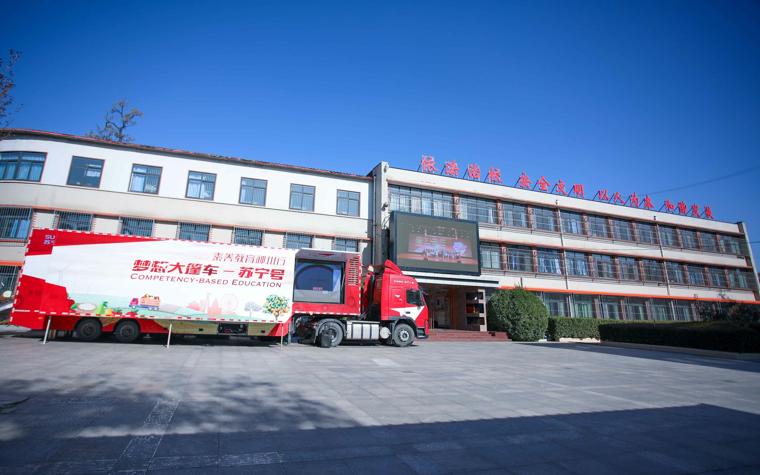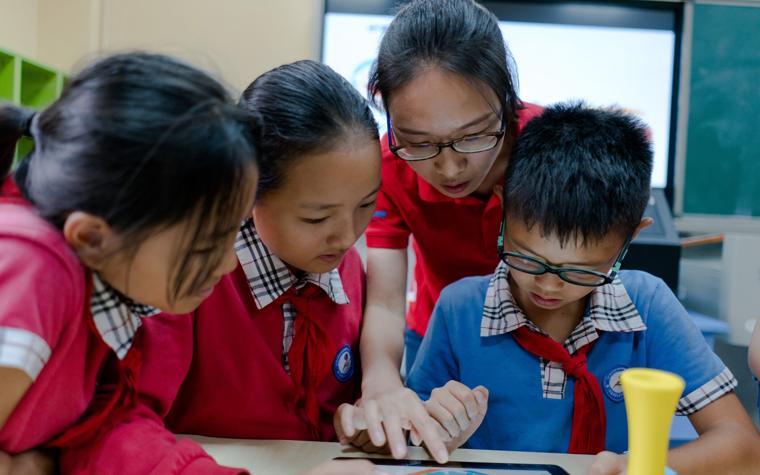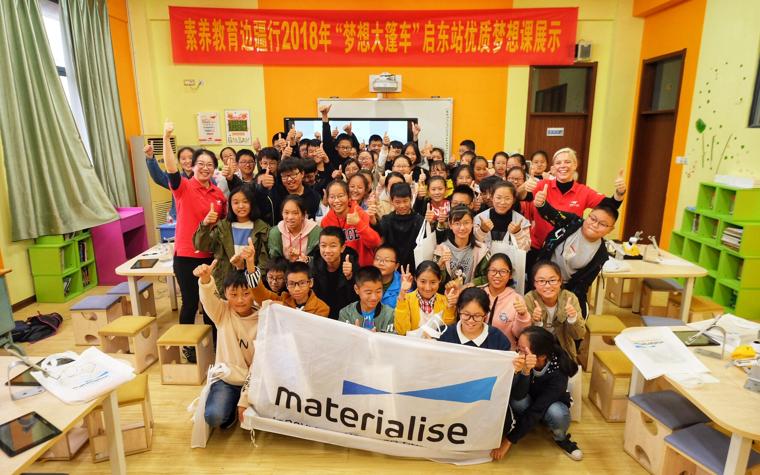COMPANY HIGHLIGHTS
The Dream Bus: Bringing 3D Printing to the Next Generation
March 3, 2020
Back in 2015, a working group at the Materialise China office decided to take to the road with a dream. Inspired by African Drive, another Materialise CSR initiative, together with the Adream Foundation, Suning and other partners, they launched the Dream Bus project to enable school kids across Western China to learn about and explore what 3D printing can do.


The idea behind the Dream Bus is fairly simple: to provide basic knowledge of 3D printing to students aged 7-15 living in remote areas, by means of an enthusiastic group of volunteers aboard a high-tech classroom on wheels. The potential ripple effect of the initiative could, however, be far-reaching: what might it mean to spark an interest in one of the most innovative and potentially disruptive technologies today among an ever-growing number of eager youngsters?
The Materialise volunteers working on the Dream Bus/Silk Road project hope that, through their efforts, a whole new generation of young people will have the opportunity to get to know the technology — and feel inspired by what it can do. By providing immersive learning opportunities, the aim is to make the Materialise mission statement of working together to create a better and healthier world something the next generation grows up working towards as well.
“Some children tell us that they want to 3D print human organs to help sick people. Some say they want to print spaceships and flying houses. Some have even said that they want to 3D print vegetation to plant in deserts. Although they may not yet fully understand the principles of this technology, they all have the belief that it can change the world.”
— Materialise China volunteers (quotes collected during the Xiamen stop, Fujian Province)
2015-2019: Over 50,000 students have had a chance to board the Dream Bus
Weighing in at a whopping 27 tons, the traveling classroom is 17 meters long and 4 meters high. When fully expanded, the interior area is nearly 60 square meters. It houses books, desks, tablets, projectors, 3D desktop printers and other teaching equipment, and can serve as a multimedia classroom, a small library, or even a mobile cinema.
In 2019, the Dream Bus made 10 stops, spending two to three days with local communities, government officials, educators, and, of course, lots of schoolchildren per stop. The accumulated travel distance over the whole year was 21,000 kilometers.
Since its inception in 2015, the mobile learning hub has visited 190 schools in 25 Chinese provinces, covering a total of 120,000 kilometers. Close to 2000 volunteers have helped keep the wheels spinning, and close to 5500 local teachers have supported the Dream Bus during its stops. Overall, more than 270,000 students have had contact with the bus, be it by boarding the classroom directly or taking part in some of the courses provided.


Exploring the world beyond the mobile classroom
Aside from giving hands-on courses related to 3D printing technologies, Materialise volunteers also offer sessions on what it might mean to travel to other countries and become acquainted with new cultures. Kim Francois, a Belgian Materialise employee living in China, lets the young workshop attendees travel virtually to a little country called Belgium during her sessions. Quite a feat, seeing as Belgium doesn’t usually ring a bell with Gen Z’s living in rural Western China. Popular Belgian exports (think: chocolate – including 3D-printed chocolate – The Smurfs, and Tintin) are a good way of providing the kids with a feel for the culture, Kim has found. Having had overwhelmingly positive experiences working on the Dream Bus, Kim has been involved in the initiative since 2016.
“[Giving the course] is always an amazing experience. The students are a bit shy in the beginning, but this goes away after only five to ten minutes, when they start to feel at ease. The students are eager to learn, super well behaved, and curious,” says Kim Francois, Materialise volunteer.
Down the road
Together with the initiative’s partners, Materialise China hope to cover many more miles as the Dream Bus makes stops along the Silk Road, bringing science, technology, and culture a little closer to kids who might not otherwise have easy access.
According to one of the Materialise China volunteers at the Qidong stop in Jiangsu Province: “We have had different stops, visiting primary and secondary schools, and experienced different cultures and traditions along the way. Though educational resources are limited in these developing areas, the children's curiosity is the hope of the future.”
Sustainability is more than just a word for Materialise, it’s a pledge. Our mission to make the world a better and healthier place has been a defining factor of our company since the beginning. Yet we cannot do this alone. For the 2020 edition of the Materialise World Summit (MWS), we call on the movers and shakers from a wide range of industries to join us and create a vision for the future of 3D printing in the next decade and beyond.
Share on:



